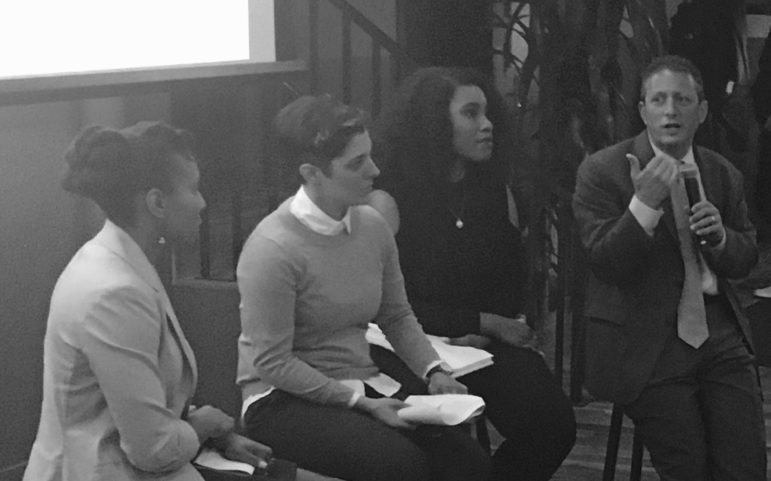
Fran Reilly
From left to right, panelists Williams, Bozorg, Pierce and Lander.
Fifty years after the passage of the Fair Housing Act and a few months after the Trump administration delayed a rule requiring cities to assess how their policies help or hurt the cause of fair housing, New York City has launched its own process for identifying ways to reduce barriers to equal housing.
When New Yorkers discuss housing, they typically talk about affordability, not fairness. That doesn’t mean the two goals are totally exclusive. But it does mean they will not always or easily align.
This week, City Limits hosted Department of Housing Preservation and Development Deputy Commissioner Leila Bozorg, Brooklyn Councilmember Brad Lander, Fair Housing Justice Center Policy Coordinator Chanera Pierce, and Association for Neighborhood & Housing Development deputy director Barika Williams for a frank discussion about where common ground exists and where tensions are present between those two housing goals.
Below are some highlights. (Each video embed is set up to play a short clip, but each one can also be manipulated to see as much of the event as you like.)
Early on, Williams answered a simple but important question: Why is segregation problematic, and who exactly is hurt by it?
Soon after, Bozorg addressed the criticism that the de Blasio administration’s neighborhood rezonings—a key part of the mayor’s plan to address the housing crisis by increasing housing supply and supporting affordable rents—are targeting low-income communities of color, therefore exposing some New Yorkers to more displacement risk than others.
A key point of contention between “fair housers” and affordable-housing advocates is the city’s “community preference” policy, which reserves 50 percent of apartments in affordable housing developments for residents of that community board. It’s the subject of a lawsuit, and Pierce explained why she and some others oppose it.
While acknowledging the flaws of the preference, Williams and Lander offered a defense.
Then Bozorg outlined the city’s Where We Live NYC process for analyzing fair-housing issues, which grew out of an Obama administration rule that the Trump team backburnered.
As the event wrapped up, Lander argued for a comprehensive planning process as a mechanism for reconciling the goals of fairness and affordability—and said that it was more politically possible than is typically assumed.
Finally, since New York is one of the most segregated cities in the county, we asked: What will success look like? Pierce took a stab at defining it.









One thought on “The Challenge of Making Housing Fair and Affordable in NYC: Video Highlights”
Integrate the schools how? NYC public schools only 15% white. Not enough white kids to shuffle around.
http://schools.nyc.gov/NR/rdonlyres/7B3B0E3E-2FA8-4162-8F2E-725A65E418F2/0/DemographicSnapshot201314to201718Public_FINAL.xlsx